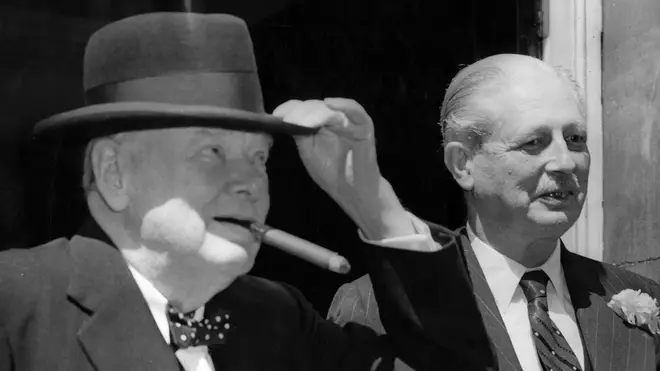
Matt Frei 10am - 12pm
25 November 2020, 17:54

The UK is facing its biggest slump since the early 1700s.
If the latest forecasts from the Office for Budget Responsibility (OBR) are correct, the UK is on course for its highest peacetime deficit in modern history, along with the biggest drop in economic output for more than 300 years.
Here are some of the historic milestones that could be facing the country.
– Highest deficit (as % of GDP) since 1944/45
Government borrowing is on course to hit its highest level since the end of the Second World War. The OBR forecasts the deficit for 2020/21 will reach the equivalent of 19.0% of GDP (gross domestic product, or the total value of the economy). This would be the highest level since 1944/45, when the figure stood at 22.1%. It would easily beat the previous post-war record, set during the financial crash, when the deficit reached 10.1% of GDP in 2009/10.

– Highest debt (as % of GDP) since 1958/59
Public sector net debt in the UK in 2020/21 is forecast by the OBR to reach the equivalent of 105.2% of GDP. It is then forecast to climb even further, hitting 109.4% by 2023/24. This would be the highest level since 1958/59, when debt at the end of the financial year stood at 114.4% of GDP, Harold Macmillan was prime minister, and Russ Conway was at the top of the singles charts with Side Saddle.

– Highest unemployment rate since 2013
The OBR forecasts the rate of unemployment in the UK to reach 6.8% in 2021. This would be the highest rate since 2013, when it stood at 7.6%. In the aftermath of the 2008/09 financial crash, unemployment in the UK peaked at 8.1% in 2011. Under the OBR’s central forecast, the rate would not reach similar levels this time. After 2021 it is projected to drop to 6.5% in 2022, 5.4% in 2023 and 4.5% in 2024.
– Highest investment (as % of GDP) since 1976/77
Public sector net investment (PSNI), or the amount the Government spends on new infrastructure projects, is forecast to rise to 3.9% of GDP in 2020/21. This would be the highest level since 4.5% in 1976/77, when a Labour government was in power under first Harold Wilson and then Jim Callaghan. The figure also represents a big jump from 1.9% in 2019/20. PSNI is also set to remain well above recent historic levels, staying just below 3.0% through to 2024/25.

– Lowest inflation since 2016
Inflation as measured by CPI (the Consumer Prices Index) is forecast to be 0.8% in 2020. This would be the lowest level since 2016, the year the UK voted to leave the European Union, when the annual rate of inflation stood at 0.7%.
– Highest spending (as % of GDP) since 1944/45
The total amount the Government is forecast to spend in 2021/21, otherwise known as Total Managed Expenditure (TME), is £1.16 trillion. It is the equivalent of 56.3% of GDP – the highest level of TME since 1944/45, when it stood at 61.1%. It would also be a massive jump from 39.8% of GDP in 2019/20.

– Worst economic growth for more than 300 years
GDP is forecast to fall by 11.3% in 2020. It would rank as the largest drop in annual economic output since the so-called Great Frost of 1709, when the UK – along with the rest of Europe – was plunged into one of the coldest winters in modern history. The extreme conditions meant that by the end of 1709 the economy had shrunk by around 13%, according to Bank of England figures.
– Lowest spending on overseas aid (as % of GNI) since 2008
Finally, not a forecast but a fact. The amount the Government spends on overseas development aid will drop to the equivalent of 0.5% of the UK’s gross national income (GNI) in 2021, Chancellor Rishi Sunak has announced. This is the lowest level since 2008, when the figure was 0.43%. From 2013 to 2020 it stood at 0.7% – meeting the target originally set by the United Nations in 1970 for all developed countries in the world.
